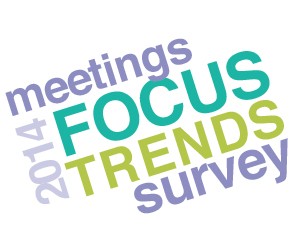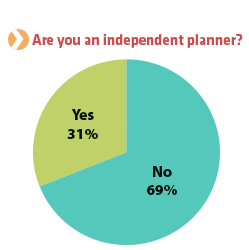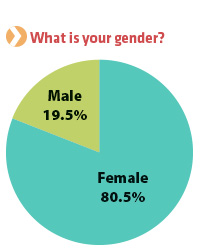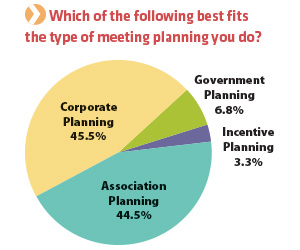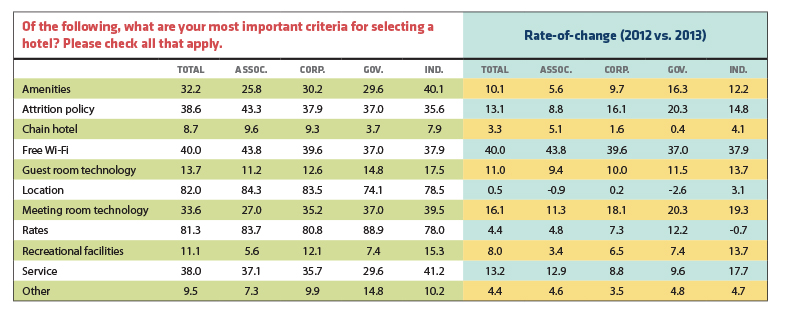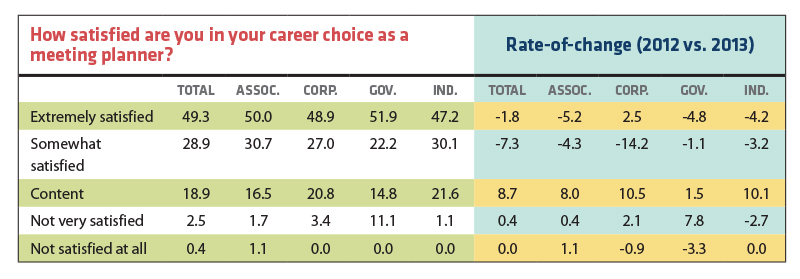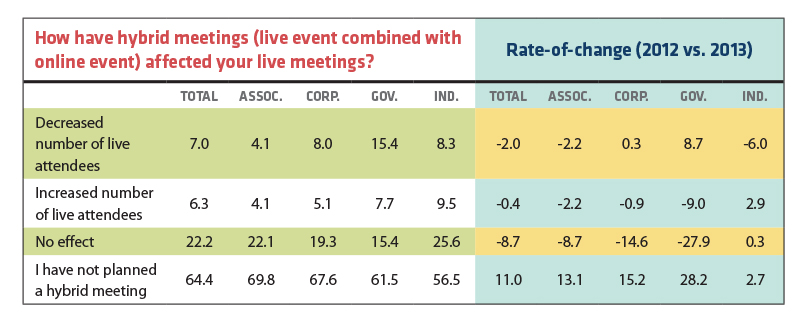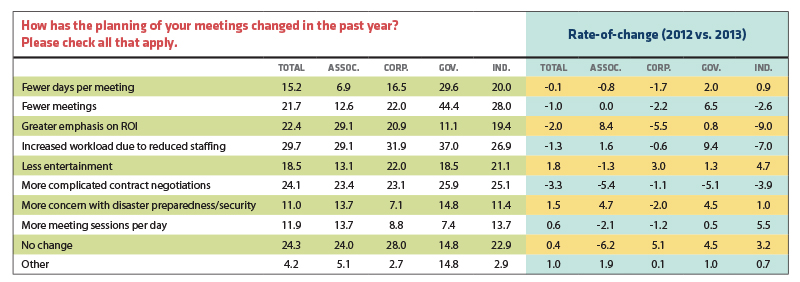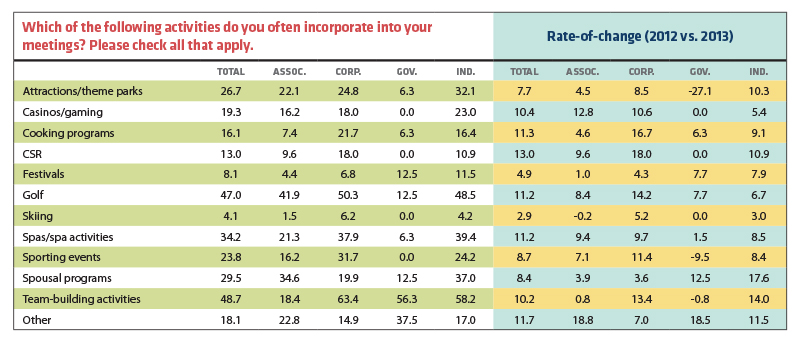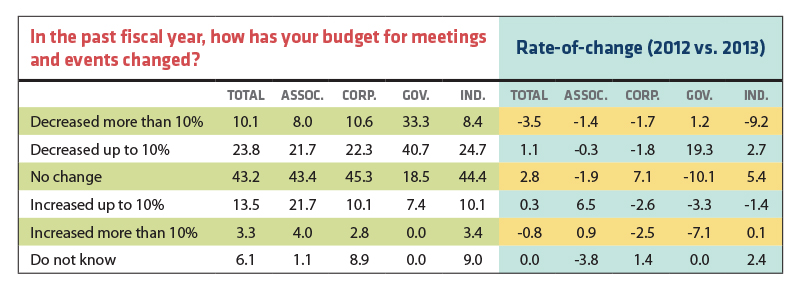With the economy stuck in low gear on its long, steep climb up “recovery mountain”—and a federal government that is having a hard time actually governing—meeting planners and industry experts are forecasting a temperate climate in 2014, but perhaps shaded by clouds of uncertainty.
This year’s Meetings Focus Trends Survey attracted complete responses from nearly 600 meeting planners, and while the economy appeared to slowly build momentum, the end of the year witnessed a government shutdown and threat of default that furthered an atmosphere of skittish corporate confidence. Compounding this was a major failure in the rollout of the Affordable Care Act—aka “Obamacare”—which sowed additional confusion and apprehension in the marketplace.
“It seems like consumer confidence is continuing to edge up a bit, but business confidence is a little sluggish with the shutdown and healthcare,” says Bobby Bowers, senior vice president of Smith Travel Research (STR), which tracks U.S. hotel trends. “In 2014 everyone is talking about the economy getting better, but we haven’t seen that big growth pop coming out of this downturn. People are sort of looking at this as the ‘new normal,’ and that may contribute to the fact that those in the corporate world don’t have the confidence they’ve had in the past when we were coming out of a downturn.”
Hotels and NegotiatingAccording to Bowers, the luxury segment is continuing to pace ahead of the pack, and has even surpassed 2008 numbers—the Holy Grail of pre-recession performance. As a whole, he says, the supplier side is inching back toward its previous peak performance levels.
“We’re pretty much there, almost across all of the asset classes,” he says. “We’re not quite there in terms of rates, but we’re very close in terms of luxury properties, because they really got hit. If you look at the nominal—not factored in for inflation--RevPAR [Revenue per Available Room] rate, we’re pretty much back to where we were, but if you factor in inflation we’re about a year off.”
Since occupancy rates have steadily climbed in the last two years, and are expected to hold relatively firm in 2014, meeting planners will probably see rate increases in the range of 4.5 percent, Bowers contends.
“I think it’s going to continue to be one of these environments that, depending on the market you’re in and the type of meeting you’ve got, things are going to be pretty competitive,” Bowers says. “If it’s a bigger event, you’ll have the opportunity to push the negotiations a bit because they’re just not back to where they were. If it’s a smaller event, it may be a bit tougher.”
STR predicts the top, or luxury, end of the hotel market will see average daily rates (ADR) increase 5.4 percent by the end of the year. Upper upscale is expected to post a 4.6 percent increase and upscale may rise 5 percent. PageBreak
Market PerformanceThe supply-to-demand ratio in new construction suggests that planners may find good values in several markets in the coming year. Metro areas where the percentage of existing guest rooms is expected to increase more than 2 percent due to construction include Orlando; Houston; Long Beach, Calif.; Seattle; Washington, D.C.; and Miami. Nashville will see a room increase of more than 3 percent, Denver 4.5 percent and New York 12.2 percent, although New York can hardly ever be considered a “value.”
Planners looking for the best deals in the U.S. should probably keep their eyes in the middle of the country.
“I think that any of the markets that are off the coasts, such as Detroit, Minneapolis, Cincinnati—those heartland-type markets—are a good opportunity because they haven’t seen the rate growth of markets like San Francisco or Miami,” Bowers says.
The Survey Results
Perception Issues PassingOne big change in this year’s survey is the rate-of-change in responses regarding perception issues.
We asked planners whether public perception affects their choice of both destinations and facilities.
For destinations, more than 20 percent fewer planners this year said their decisions were affected, although it does enter into the equation for nearly 60 percent of respondents.
When it comes to facilities, nearly 19 percent fewer planners this year said splashy meeting venues affected their site selection process, but again, more than 55 percent still had their worries.
Career SatisfactionIf watching the federal government operate in the last part of 2013 made you want to pull your hair out, being a government planner could leave one bald.
Responses indicate that government meeting planner stress is on the rise, with a 12 percent increase in the number of government planners who identify downsizing as the biggest threat to their career. On the flipside, the other meeting planning segments (association, corporate and independent) all registered decreases in the downsizing response this year. Compounding things, 18.5 percent more government planners selected virtual meetings as the primary threat to their livelihood—and nearly 26 percent said they plan virtual or hybrid meetings now—as did a significant amount of planners in the other segments.
When it comes to career satisfaction, nearly 5 percent less government planners selected “Extremely Satisfied,” which was exceeded by association planners, who decreased a little more than 5 percent in this category. While in years past meeting planners were typically a pretty happy bunch when it came to career satisfaction, the 2013 survey found large increases in those who were merely “Content,” with movement probably sliding downward from the “Somewhat Satisfied” response option. PageBreak
BudgetPlanners across all segments, with government planners again being the outlier, expect their meetings and events budgets to remain fairly stagnant in the coming year, with more primed for a decrease rather than an increase.
About half of the total planners surveyed said they expect their budget to stay the same. Those expecting a decrease include 20.8 percent of association, 21.2 of corporate and 27 percent of independents; 44.4 percent of government planners are girding for a budget cut. Year-over-year, 19.3 percent more government planners expect a cut of up to 10 percent this year, but 19.7 percent less believe their budget will decrease more than 10 percent—33.3 percent said their budget was chopped more than 10 percent in 2013, and a total of 74 percent said they experienced a cut of any size during the last year.
Number of MeetingsThe amount of planners who expect their number of meetings and events to increase in the coming year reflects a healthy outlook for the industry, with a total of 18.8 percent believing the amount of programs they plan will increase up to 10 percent (20.9% association; 17.1% corporate; 7.4% government; 19.2% independent). The responses in the “More than 10%” category rose 13.4 percent across all segments year-over-year, led by association planners at 18.6 percent more; 22 percent of government planners, however, expect the number of meetings they plan to drop up to 10 percent next year, and 12.3 percent of total planers answered the same.
Duration of MeetingsThe length of the typical meeting appears to be shrinking, with the 17.5 percent of planners across all segments responding that their typical meeting lasts three days, led by 18.8 percent of independents. The next most popular response was two days (15.2% of the total), followed by 2.5 days and one day (13.8% for each). The sweet spot for corporate planners was between two and three days, with association planners tending to stretch their meetings out another half or full day. Year-over-year downward pressure was felt in the number of planners who responded that their typical meeting was one day, with 2.7 percent more answering as such this year compared to the last year; 8.5 percent more government planners said their typical meeting was one day this year.
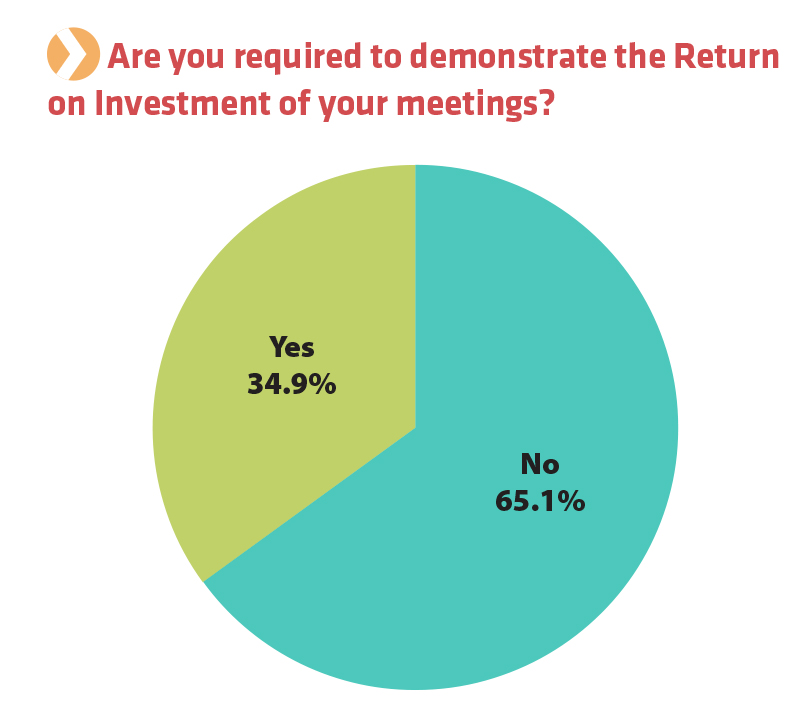 The Big PictureEvery year we ask survey takers the general question of what had caused their jobs to change the most, and this year’s results were fairly similar to the 2012 survey, with increased workload due to reduced staffing citied by 29.7 percent of planners (29.1% association; 31.9% corporate; 37% government; 26.9% independent). Other major changes included more complicated contract negotiations (24.1%); perhaps surprisingly, a greater emphasis on ROI (22.4%); and fewer meetings (21.7%). More than 29 percent of association planners indicated there was a greater emphasis on ROI during the last year.
The Big PictureEvery year we ask survey takers the general question of what had caused their jobs to change the most, and this year’s results were fairly similar to the 2012 survey, with increased workload due to reduced staffing citied by 29.7 percent of planners (29.1% association; 31.9% corporate; 37% government; 26.9% independent). Other major changes included more complicated contract negotiations (24.1%); perhaps surprisingly, a greater emphasis on ROI (22.4%); and fewer meetings (21.7%). More than 29 percent of association planners indicated there was a greater emphasis on ROI during the last year.
The 2014 Meetings Focus Trends Survey is a proprietary Meetings Focus online study that was distributed to 36,909 Meetings Focus subscribers. As an incentive to complete the survey, respondents were offered a chance to win one of five $50 Visa gift cards. Conducted in September 2013, the survey generated 586 complete responses.



